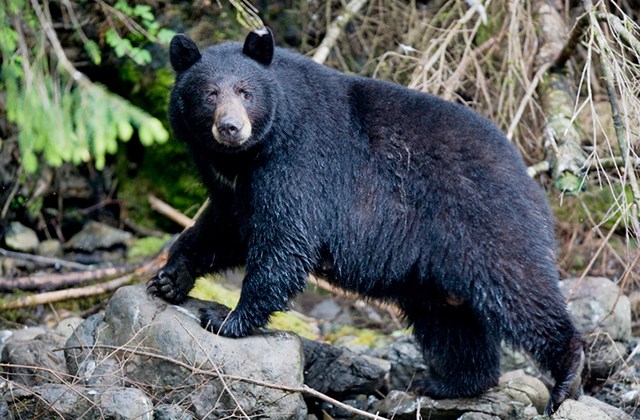A juvenile bear seems to be exploring the Longmont area.
Community Facebook groups have been reporting a juvenile black bear spotted in and around Longmont. According to Jason Clay, public information officer for Colorado Parks and Wildlife, there have been a few calls in the Longmont and Niwot areas over the past week reporting a bear.
“When we get reports on bears, our first responses are to assess the situation and dependent on the circumstance or possible conflicts, from there we can provide education to residents, monitor the activity and behavior of the bear, provide site visits to residents and landowners to help identify ways they can mitigate conflicts with bears, utilize hazing tactics to attempt to get a bear to move out of the area, or even other measures such as relocation or removal of a bear if warranted,” Clay said.
The bear activity has also drawn the attention of the Colorado Bear Coalition, which has put out a bear alert to the Longmont community.
“Black bears are typically shy, non-aggressive and avoid people,” said Brenda Lee, executive director of the nonprofit. “However when bears come into urban areas, oftentimes looking for new territory, they find easy sources of food and decide to stay. This is not good for the bear as they can then get habituated to human food sources, become less likely to return to natural habitat and can become more assertive in their attempts to get food.”
Clay said it is relatively common for bears to come into urban areas throughout the Front Range, usually due to their proximity to riparian systems with a wetter environment of natural food mixed with the human food sources that exist when attractants aren’t properly secured.
“These intelligent animals are sometimes lured into communities due to the prospect of easy calories,” Clay said. “If attractants are not removed, bears may continue to linger and possibly cause damage.”
Both the Colorado Bear Coalition and CPW encourage the community to remove attractants so that the bear moves on. That means removing all bird feeders including hummingbird feeders, securing trash until trash day, bringing pet food and chicken feed inside, cleaning outside grills, keeping livestock in secure enclosures and locking vehicles.
It’s helpful to tend to ripe fruit and vegetables immediately and secure personal bee hives.
“It is also important for residents to haze a bear away should they see one,” Clay said. “That can be accomplished by activating your car alarm, blowing an air horn or simply banging pots and pans together. Removing these attractants and hazing bears when you see them can help encourage bears to remain wild, reduce conflicts and keep you and the bears safe.”
Lee also reminded people to give the bear space and not attempt to follow it around.
“The hope is that this bear will learn to be afraid of people and move back to a safer place in the mountains,” she said.
CPW asks the public to report bear activity, especially right when conflicts first occur, by calling their Denver office at 303-291-7227.
Learn more about keeping bears and people safe at www.coloradobearcoalition.org or cpw.state.co.us/bears.



